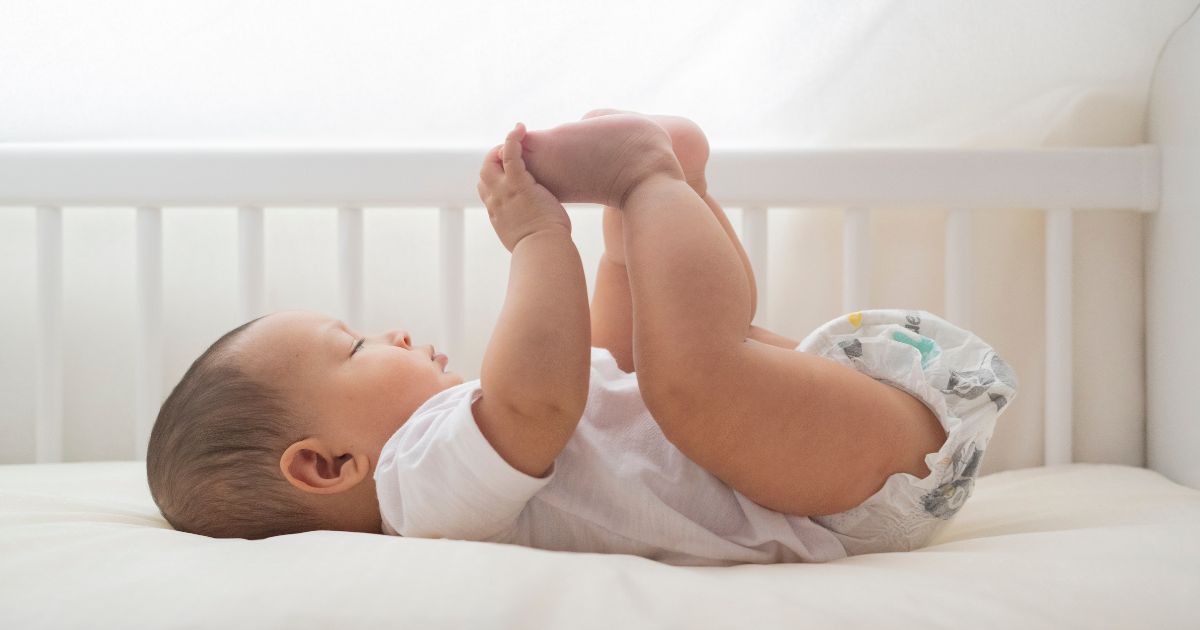The first time a baby smiles back at their mom, it’s heart-melting. But for months after birth, that smile isn’t about recognizing you as a separate person—it’s about comfort, familiarity, and instinct. In the early weeks, babies feel like part of their mothers, emotionally and physically. So when does that change? When do babies actually realize, “Hey, Mom and I aren’t the same person”?
The short answer: around 6 to 9 months old, babies begin to develop a sense of self and start understanding that they’re separate from their primary caregiver. But like most developmental milestones, this one unfolds gradually—and beautifully.
Understanding a Baby’s World: The Early Months
In the first few months after birth, a baby’s sense of “self” doesn’t really exist. Psychologists often describe this stage as a “symbiotic relationship” between mother and child. To a newborn, mom isn’t just another person—she’s warmth, milk, heartbeat, and comfort rolled into one.
At this stage, babies rely almost entirely on physical closeness. They don’t yet realize that the person who feeds them and cuddles them exists even when she steps away. This is why newborns often cry the moment their mothers disappear from view—they genuinely can’t understand that she’ll come back.
The Spark of Separation: Around 6 Months
Around six months, babies begin to form mental images of familiar people and things. Psychologists call this object permanence—the understanding that something continues to exist even when it’s not visible. It’s one of the earliest clues that a baby’s brain is starting to connect dots between themselves and others.
When a baby drops a toy and looks for it, that’s object permanence in action. The same concept applies emotionally. When mom walks out of the room, the baby now knows she still exists—but also realizes she’s not right here. That awareness is both comforting and, at times, distressing.
Separation Anxiety: The Growing Pains of Independence
From about 8 to 12 months, this realization deepens and often leads to what parents know as separation anxiety. Suddenly, a once-calm baby may cry or cling when mom leaves—even for a few minutes.
This behavior isn’t a sign of insecurity; it’s proof that your baby’s brain is maturing. They now understand that you’re separate and mobile, and they’re trying to cope with that idea. Pediatricians at HealthyChildren.org (a resource from the American Academy of Pediatrics) explain that this stage peaks around one year of age but can vary widely among children.
As frustrating as it can be, this phase shows emotional growth. Your baby is developing trust—the understanding that even though you’re separate, you always come back.
Mirror Moments: Discovering the “Me”
By around 18 months, babies begin recognizing themselves as unique individuals. You might notice your child pointing at their reflection in the mirror or trying to wipe a smudge off their own face. These small moments are major steps in self-awareness.
Developmental experts often use the “mirror test”—putting a mark on a baby’s nose and watching if they try to remove it after seeing themselves in a mirror—to assess this stage. Around this age, most toddlers start identifying as “me” and “mine,” showing they now distinguish themselves from others.
According to Verywell Family, this self-recognition also paves the way for empathy. Once babies know they’re separate, they start noticing that others have their own feelings too—a critical social milestone.
How Parents Can Support This Transition
Watching your baby grow into their own little person can be both heartwarming and bittersweet. You’re their safe base, but you’re also their first lesson in independence. Here’s how you can help ease this developmental journey:
1. Encourage exploration.
Let your baby play independently in a safe space while you stay nearby. This helps them build confidence knowing you’re close but not hovering.
2. Practice short separations.
Leave for brief periods and return as promised. This teaches predictability and trust—two foundations of secure attachment.
3. Talk and narrate your presence.
Even when you’re out of sight, use your voice. Say things like, “Mommy’s in the kitchen. I’ll be right back.” Babies may not understand every word, but they absorb the reassurance in your tone.
4. Celebrate reunion moments.
When you come back, greet your baby warmly. That consistent pattern strengthens their belief that separation isn’t scary—it’s temporary.
5. Be patient during clingy phases.
Those intense attachment moments are signs of love and trust. They won’t last forever, and responding with calm assurance helps your child navigate emotions safely.
From Dependence to Independence: A Gentle Journey
As babies grow into toddlers, their curiosity blossoms. The same child who once cried when you left the room will soon be waving “bye-bye” at preschool drop-off. The emotional foundation built during the first year—the balance between connection and independence—prepares them for every future relationship.
It’s important to remember that every child’s timeline is different. Some may start showing signs of separateness early, while others take longer to find comfort in independence. What matters most is consistency, affection, and reassurance.
A Parent’s Reflection: Watching the Bond Evolve
Speaking as someone who’s spent many moments sneaking out of the nursery only to hear an instant wail, I’ve realized that this stage isn’t just about the baby growing—it’s about parents learning, too. We learn to let go, even in small steps. We learn to trust that the connection doesn’t fade just because of distance.
That’s the quiet magic of parenthood: your baby begins life believing you’re one and the same, and over time, both of you discover the beauty of being separate yet inseparable.
Final Thoughts
So, when do babies realize they’re separate from their moms? Somewhere between 6 and 12 months, their growing brains and hearts begin connecting the pieces—recognizing that mom is their world, but also that they have one of their own.
That realization, though tender and sometimes tearful, is the beginning of independence, empathy, and identity. It’s one of the most profound milestones in human development—and one that makes every “Mama!” from across the room mean just a little more.







